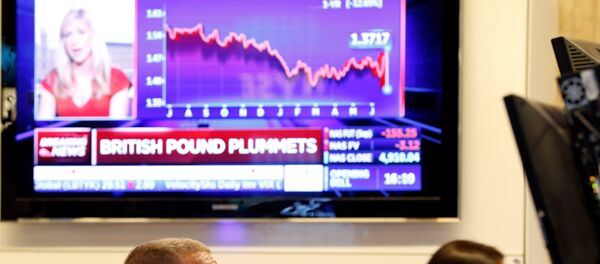Within the Fed data-dependent view of the broader economy, which is focused on consumer demand and labor market developments, the stronger-dollar policy remains a major advantage to a wide selection of overseas economies, which boost their growth through devaluations. Meanwhile, as US growth remains subdued with only a modestly optimistic outlook, the greenback's gains are sending a negative signal to the domestic non-financial sector enterprises.
Following Tuesday's release of housing market data, which revealed moderate gains on the supply side and suggested that US GDP gains would be about 2.5 percent for 2Q16 or higher, the DXY dollar index, tracking the greenback's performance against its six major peers, gained 0.5 percent to 97.048. The euro dropped to its 11-day lowest at $1.1011, exceeding the 0.5 percent losses of the previous session.
"There's more enthusiasm about the U.S. economy," Vassili Serebriakov of the New York branch of Credit Agricole said. "It hasn't really translated into a big increase in Fed tightening expectations but I think markets are starting to think the Fed could be back in the picture before the end of the year."
These developments, however, are not only bringing the Fed tightening narrative back to the table, but also revive concerns regarding the commercial earnings of US-based companies, one of the US economy's cornerstones (along with domestic consumption, manufacturing and construction). A stronger dollar slashes multinationals' revenues from overseas operations, while the abundance of cheaper imports hits US manufacturing.
The dollar stalemate, with stronger greenback benefitting the consumer while hurting the producer of goods and services, is passed on to the Fed's indecisive stance on the currency's FX rate.
"It's difficult for a Treasury secretary to say they don't want a strong dollar, because that will be seen as a sign of economic weakness," Eswar Prasad, the author of the 2014 book "The Dollar Trap" says.
"I have long taken the view, as have my predecessors, that a strong dollar reflects a strong US economy. And it's in the US interest," Jack Lew, Secretary of the Treasury, said in his post-Brexit commentary on CNBC, broadcast on the June 27.
Two factor ending credit cycle boom? Net lending survey and US dollar strength? World needs plenty and cheap US$ pic.twitter.com/nE388Gw2Su
— Steen Jakobsen (@Steen_Jakobsen) 19 July 2016
In the wake of the financial turbulence in the fixed-income and equity segments of the US financial market, the WSJ dollar index remains 1 percent down over the last year, after having advanced above 35 percent during the previous five years.
As the 2016 presidential election nears, the two major candidates for the office, Donald Trump and Hillary Clinton, seemingly have opposing views on the current dollar stalemate.
While refraining from harshly criticizing the current state of affairs with the dollar — quite an unusual behavioral pattern for him — Trump has pointed out the downsides of the dollar's strength to the US economy.
"In many respects obviously I like a strong dollar," he said in May during a CNBC broadcast. "While there are certain benefits, it sounds better to have a strong dollar than in actuality it is."
Clinton never commented on the FX rate's economic implications, yet, as a perceived status quo candidate, she is widely expected to continue the economic legacy of the Obama administration.





